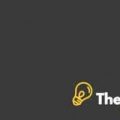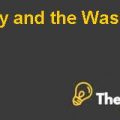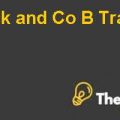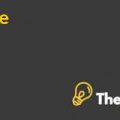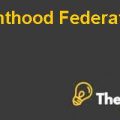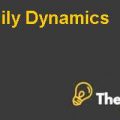Southwest Airlines Case Solution
Introduction
Southwest Airlines is the second-largest US based Airline in the world, which comprises of 144.6 million total passengers boarded in 2015. The company’s main competitive advantage includes: charging low fares from customers, providing an improved customer experience, adoption of a small cost operating model, employing the fuel hedging and derivative contracts. The company has rigorous employee hiring and training models and policies, and it also provides attractive compensation to its employees as compared to its rivals. The company strongly believes in innovation, introduction of new technologies and strategies to provide a top-notch travel experience to its customers.
The current operating model of the company, includes: charging low fares from its customers and providing top-notch travel experience to its customers by offering convenient flight schedules with feasible timings and multiple destinations to facilitate its customers. The organization expanded its business significantly by acquiring AirTran Airways in 2010, which employed the same business model that the Southwest employs currently, and served 70 airports in the US, Mexico and the Caribbean.
External Analysis
Porter’s Five Forces
The threat of New Entrants
The threat of new entrants in the airline industry is low. The government of the US and airline industry is under an Act of Airline Deregulation Act, which was signed by the president: Jimmy Carter. These deregulation fares are mitigating the firms to enter in the airline industry. This also created a challenge for other airlines of the industry. There are also different kinds of barriers, which restricts new entrants from entering the US airline market. However, legal and political factors of the country affect the entry in the airline market, but there is also a requirement of large initial capital to start a new airline. High tax on airlines is also contributing as a threat, which discourages new entrants. The US aviation industry also requires technical know-how and skilled labor to build a position in the market. All these are the factors, which are discoursing the new players to enter in the US airline industry. Higher competition is also a factor, which contributes in stopping the new players as the competitors have grown into bigger companies, which are also using effective strategies to attract the customers.
Bargaining Power of Suppliers
The bargaining power of the suppliers in the US airline industry is low. There are several suppliers of Southwest Airlines, including: producers of airplanes and training of workers. As there are few manufacturers for airplanes and all the other companies including its competitors buy from those few manufacturers, which results the suppliers demand high prices. The only business of the suppliers is airplane manufacturing and they want to build good relationships from the companies in the long-run. Boeing and Airbus are the major suppliers. Southwest Airline’s supplier is Boeing and the company renewed some of the aircraft with Boeing 737-800 airplanes.
Bargaining Power of Buyers
The bargaining power of the buyers in the aviation industry is moderate, but it is growing for Southwest Airlines. The number of passengers who travel from the US is growing. As the number of customers is growing in the industry; their bargaining power is also increasing. Ultra-low-cost carriers are rising and it is also increasing the bargaining power of customers. Southwest Airlines focuses on the low cost and higher services for travelers. The company also offers different offers for the customers with any time limitation to attract the customers. The switching cost is low, which is also a reason for an increased bargaining power. The company also offers low fares, no luggage fee, different charges for seats or long and short routes and various services from the competitors, which tend to decline the bargaining power of buyers. There are two kinds of customers, one is individual and another is group travelers. These customers have different options for airlines at a lower cost, so the company needs to retain these customers by offering such kind of services, which are appropriate as per their kinds.
The Threat of Substitute Products
In the transport industry, the customers have various options for traveling, such as: land transportation, airways and waterways. The threat of substitutes is higher in the airline industry as buses, ships and cars can be used as substitutes to travel within the country. All these options have different benefits, but it depends on the customer’s choice. Air traveling is also beneficial as it is a quick mean of transportation but it is also costly as compared to the other substitutes. The strategy of the airlines should be anything that retains the customers as Southwest is using a low-cost strategy, which is serving as its competitive advantage as other airlines are charging higher ticket prices. The company also needs to use the historical travel pattern to identify the behavior of customers towards traveling and other facilities.
Rivalry among Competitive Firms
The rivalry of competitors is high in the aviation industry. There is a huge competition in the US market. The company is facing higher competition in local as well as the global markets. The companies always need to work hard in an attempt to build their brand images in the market. The major competitors of Southwest Airlines are: American airline, Delta, and United. But Alaska, SkyWest, and JetBlue have also gained a higher percentage of market share. The company needs to expand its market share through pricing strategy and customer services. Southwest needs to use different strategies to provide more services to its customers...
Southwest Airlines Case Solution
This is just a sample partial case solution. Please place the order on the website to order your own originally done case solution.

